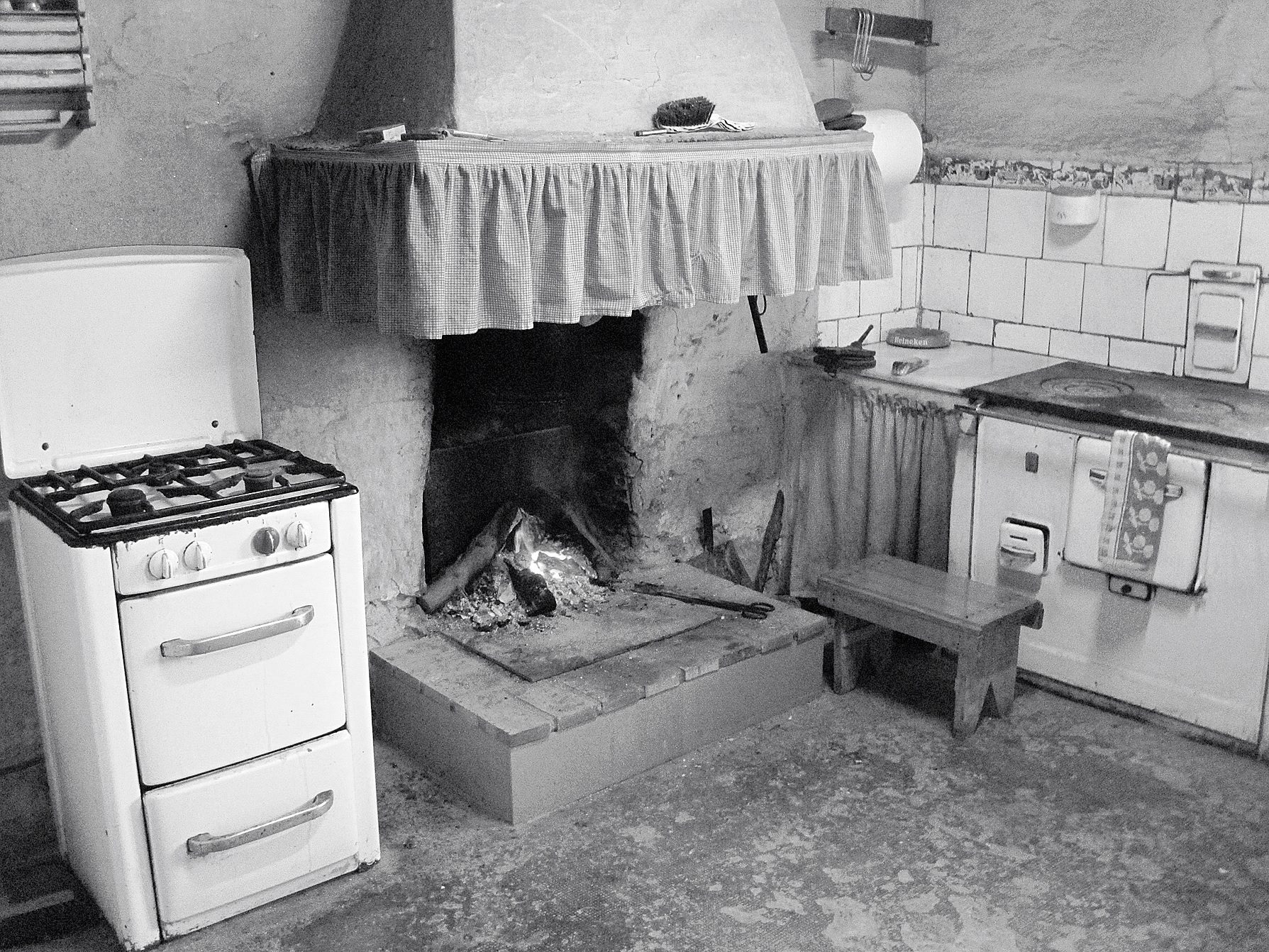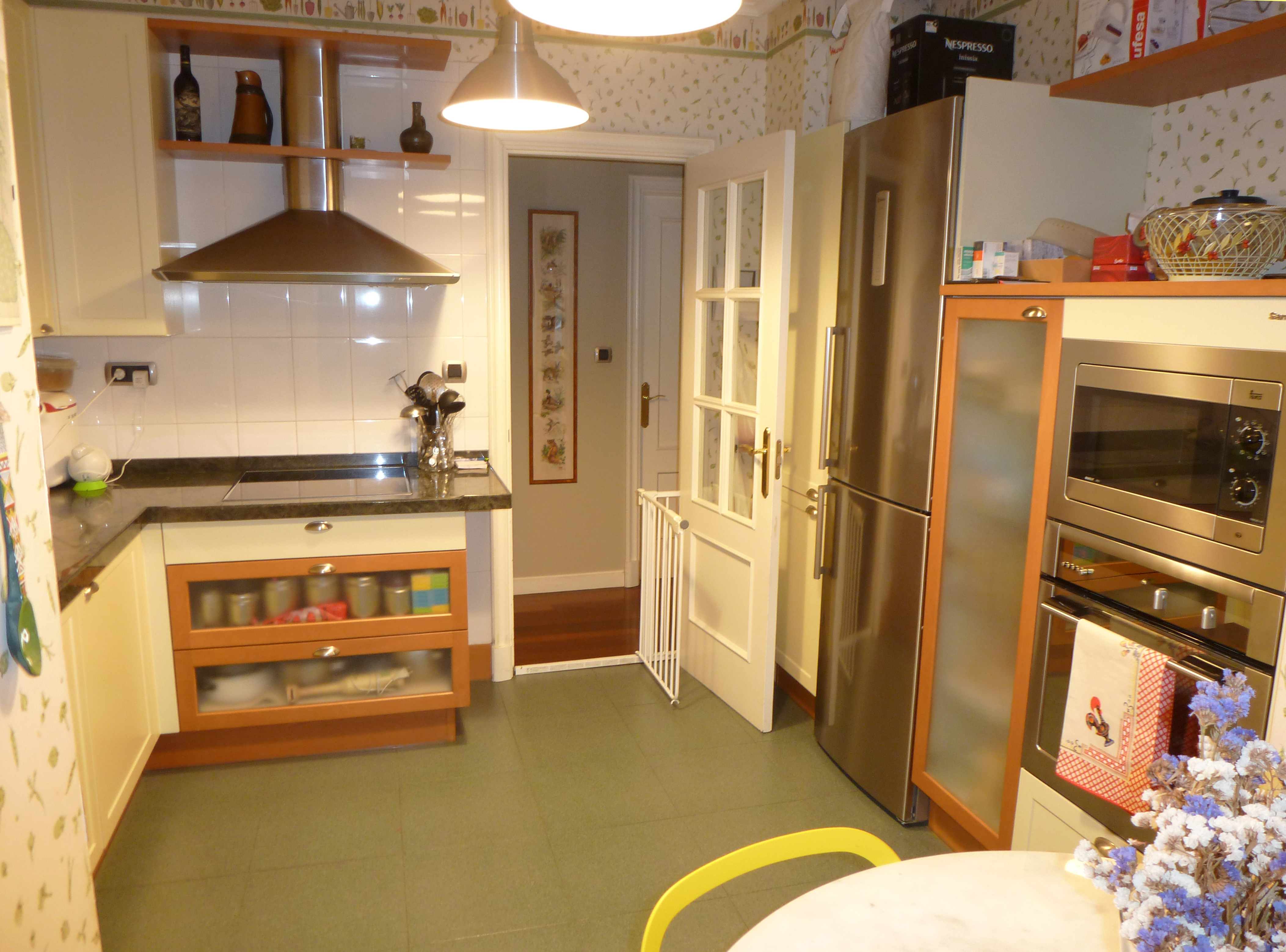Basque ethnography at a glance

Hearth, stove and butane gas cooker in a Muxika (Bizkaia) farmhouse. Segundo Oar-Arteta. Labayru Fundazioa Photographic Archive.
The structural components of the traditional house, roof, walls, doors and windows, served to protect the fire of the hearth. The fireplace was an integral part of the home, its central and most important feature. The idea of a house without a hearth, where the household sought shelter, was simply out of the question. The wind was nature’s most feared element. Strong winds were a great threat, for a spark from the hearth could spread to the wooden structure of the house and consume it.
The relevance of the hearth was such that the concept has been generalised to refer to a home or household. As a matter of fact, the hearth tax (recorded on hearth money rolls) was levied on the basis of the number of hearths in each house, thus by metonymy on each family unit.
The hearth was used for cooking food, both for people and livestock, and heating water for laundry and personal hygiene. Family life revolved around the fireplace. The family gathered by the fireside to have their daily meals and to carry out domestic chores, namely sawing, weaving or threshing grain. The hearth was the meeting point, a learning space for the young and a teaching venue for the old. Children did their schoolwork and the elderly told stories and legends at the warmth of the fire. Everyday prayers and remembrance prayers for the dead were also said there. Certainly the kitchen (sukaldea, in Basque), such a warm and inviting area, has traditionally been at the core of the home activity.
Until the advent of electricity, the fire of the hearth, the burning wick in an oil lamp, the flame of a candle or the brightness produced by a carbide lamp were the only ways of lightning once the sun had set. The romance of the hearth and home image takes us back to time immemorial, and the last half-century of technological advances would seem just a blink of an eye had it not been for the intensity of such changes, an intensity that resembles the power of that frightening wind.
Luis Manuel Peña – Ethnography Department – Labayru Fundazioa
Translated by Jaione Bilbao – Language Department – Labayru Fundazioa
(Adapted from House and Family, part of the Ethnographic Atlas of the Basque Country collection)


